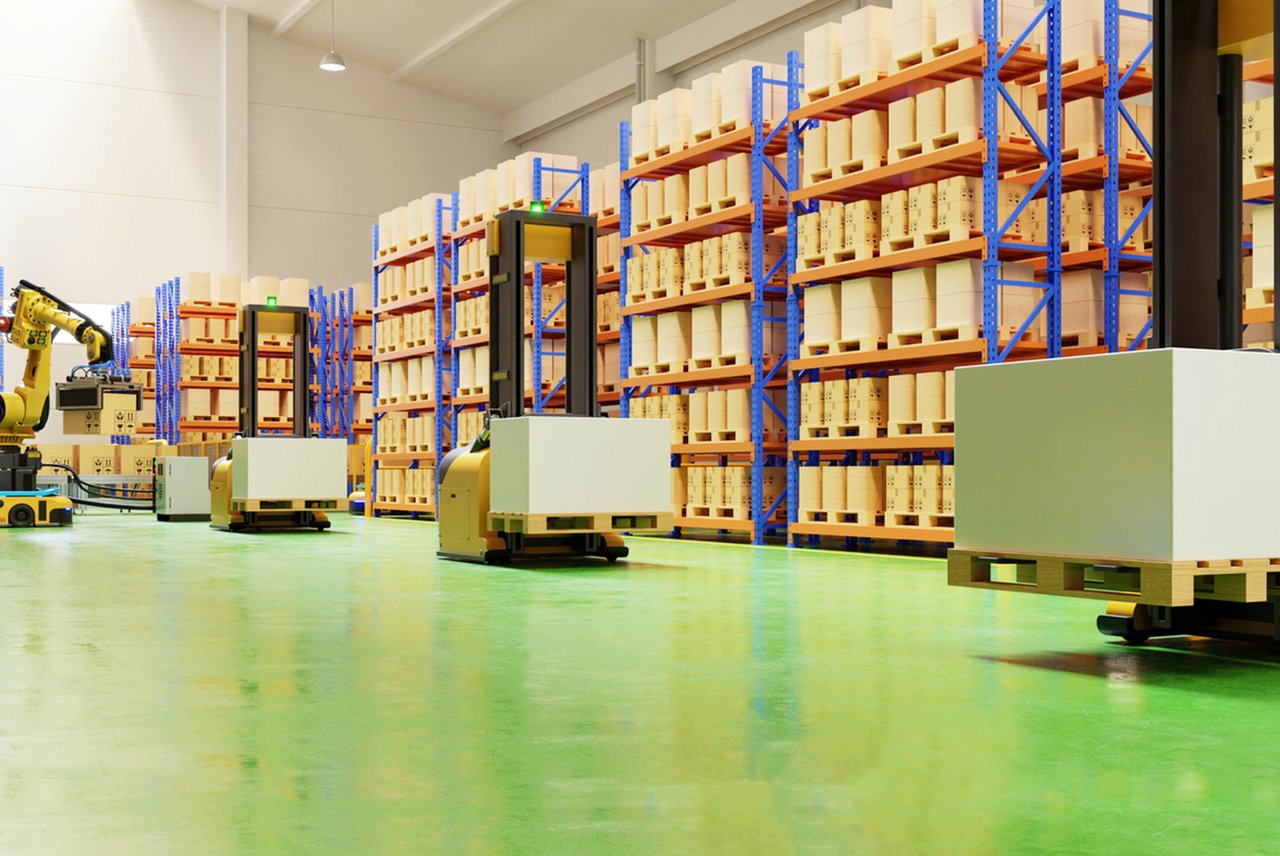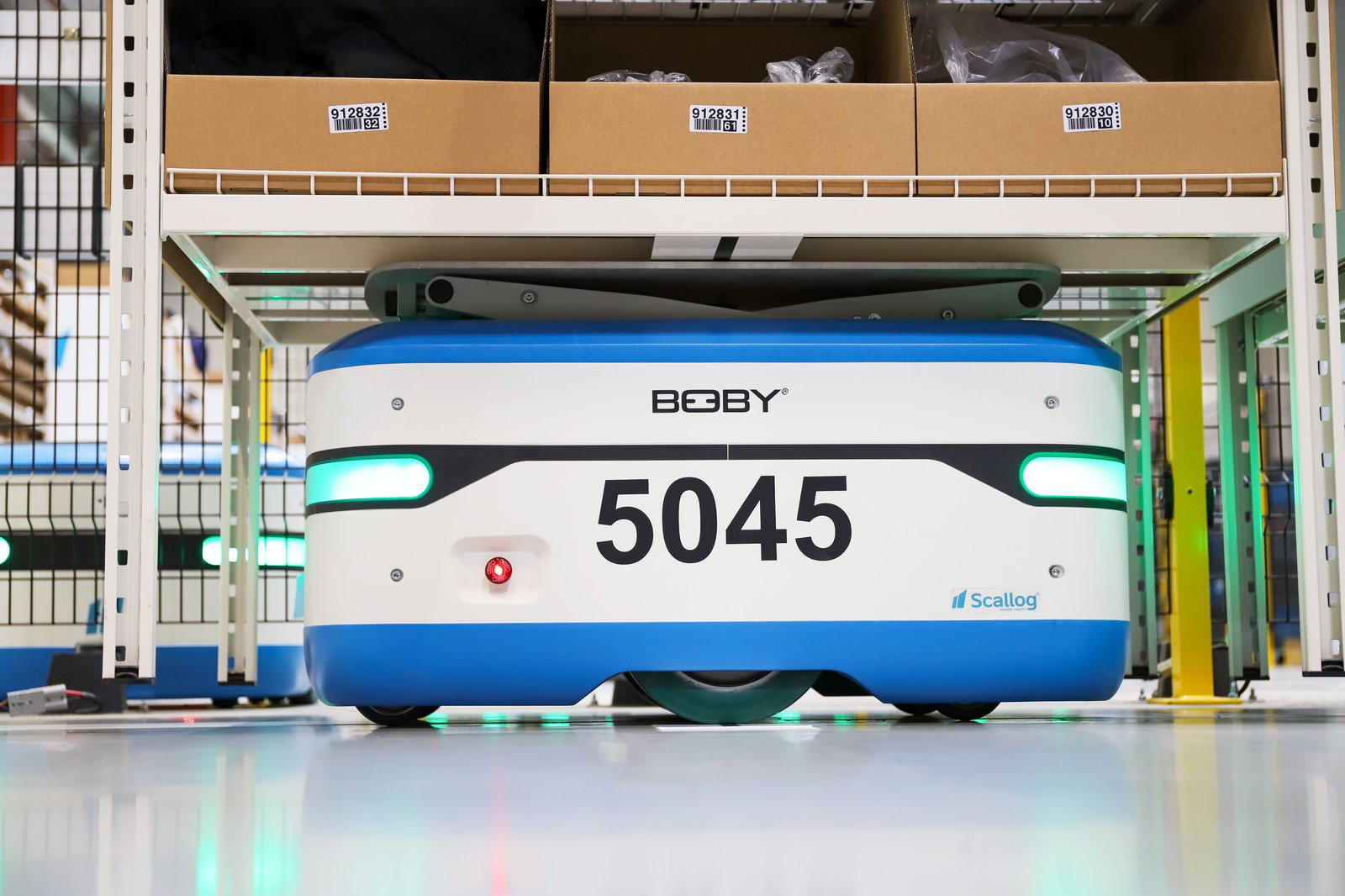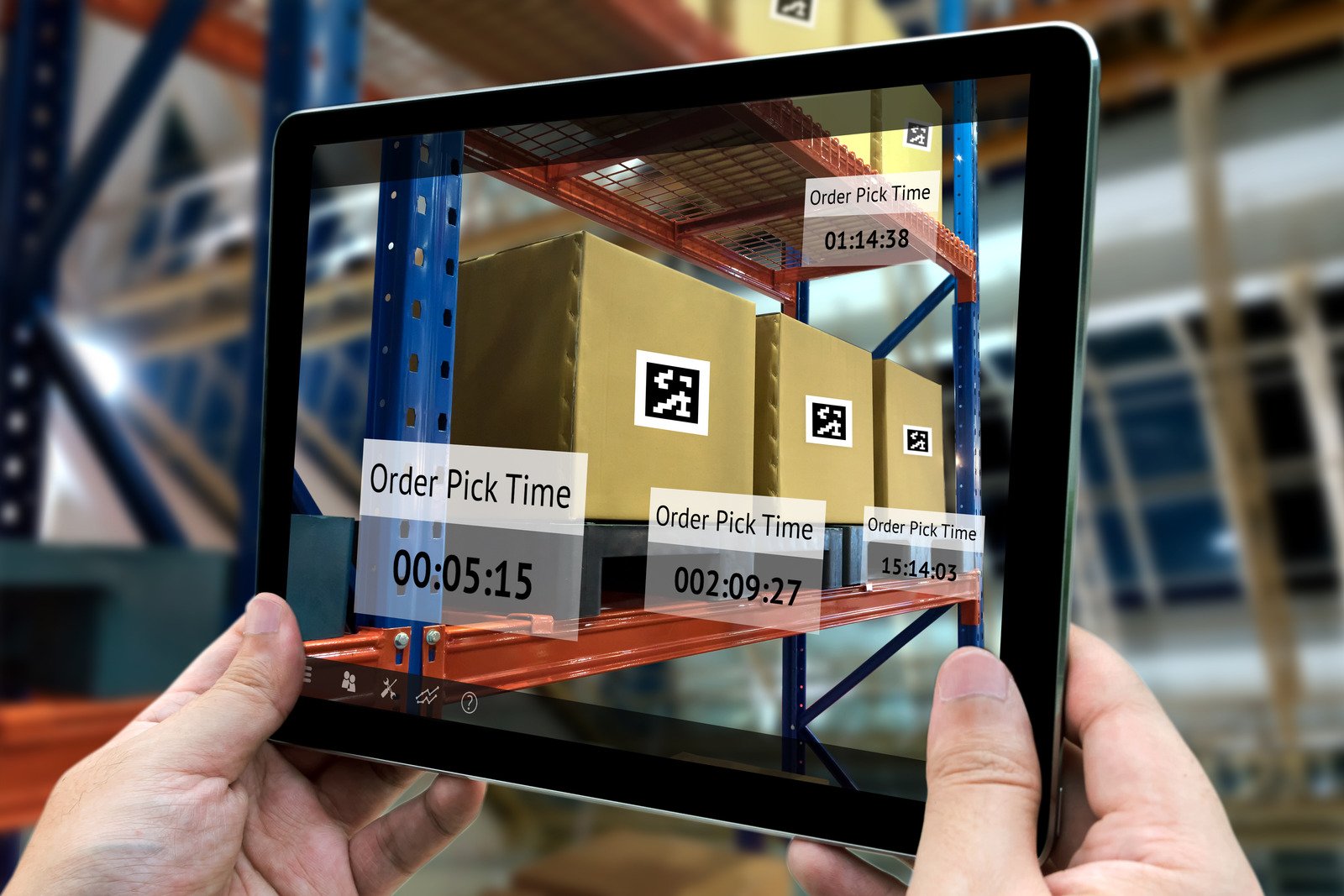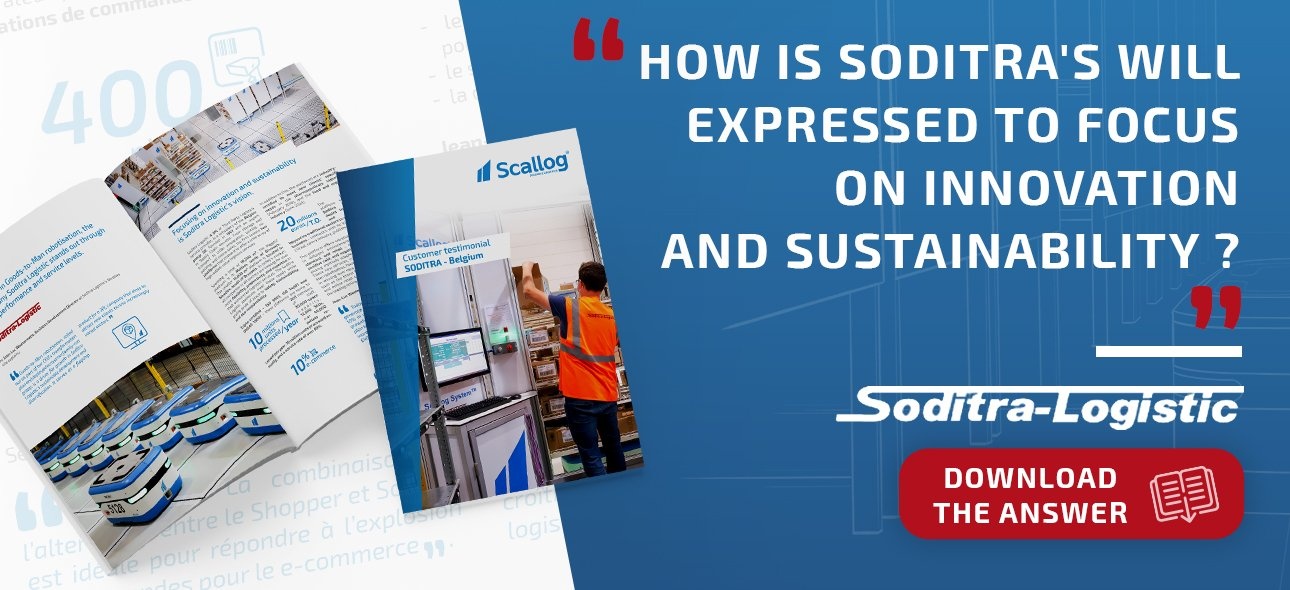Intralogistics automation is a key issue for enterprises. Why mobilize labour to get stuff when you can automate these tasks and focus employees on high value-added activities instead?
In supply chain logistics, two types of robotic automation systems are used: Automated Guided Vehicles (AGV) and Autonomous Mobile Robots (AMR.).
Read on for more info on each solution, the latest developments in the field of smart robots for the warehouse sector, and how to decide which solution is ideal for your needs.
What is an AGV robot?
AGV robots move goods around independently.
The first AGVs appeared in the 1950s in the form of automated pallet handling trolleys or forklifts.
AGVs are still often referred to as automatic forklifts.

In the 1970s, after Volvo introduced it on its production lines, the AGV became an indispensable tool in the then-embryonic automated logistics sector.
Robust, capable of carrying heavy loads and covering long distances, each new generation of AGV has been an improvement on its predecessor.
Today, although AGVs are mainly used in logistics and industrial handling, they are also found in hospitals, museums, airports etc.
There are 3 principal types of AGV:
- unit-load vehicles, which can only carry a single unit of load (pallet, shelf unit, bin) at a time.
- forklifts, used for moving pallets and fitted with fork-level sensors.
- self-driving tuggers, which can pull up to 8 tons on one or more loaded trailers.
Equipped with various technologies, these AGVs travel at a speed between 50 and 150 metres per minute, moving independently according to a predefined trajectory.
The different types of AGVs use a variety of guide systems: magnetic floor strips, integrated laser or GPS.
What is an AMR robot?
Autonomous Mobile Robots or AMRs move autonomously without a guide system.
Controlled in real time by WCS (Warehouse Control System) management software that optimizes logistic flows thanks to artificial intelligence, AMR make the work of operators easier.
They make picking, sorting and inventory tasks more efficient.

Initially perceived as futuristic and expensive, AMRs have now replaced AGVs in distribution centres.
They are more versatile and quicker to deploy in supply chain logistics, and they deliver a real competitive advantage.
There are several types of AMR. The ones most commonly found refer to the type of picking performed:
- Man to goods AMRs, which take the operator to the product
- Goods to man AMRs , which take the product to the operator
Some AMRs are dedicated to sorting. These are most often found in Asia.
Installing AGV or AMR in your distribution centre
Installing an AGV requires some adaptation to the working environment. AMRs, on the other hand, can be deployed without any special modifications.
Installation costs are moderate, as they relate only to the preparation of the floor surface.
Other automation solutions are used in the preparation of detailed orders and stock management (shuttle, mini-load, stacker crane etc.).
These rack systems with a vertical storage configuration require a much bigger investment.
Human-robot interaction is another important aspect, and the need to designate a “robots only” zone must also be taken into account.
Scallog: an intelligent robotics solution that combines the benefits of AGV and AMR.
Historically, the difference between an AGV and an AMR is in the level of autonomy and the type of technology used.
Modern logistics robots, however, often use embedded technology which blurs the traditional distinction between AGV and AMR.
Scallog's intelligent robotics solution combines the benefits of AGV and AMR technologies.
The Scallog Solution used mobile shelf units to accelerate and automate order picking.
Scallog’s solution offers significant benefits:
- rapid, low-cost installation (2-3 weeks)
- enhanced safety and security
- more accurate order picking
- productivity gains (3 times higher than traditional solutions)
- high modularity
Robotics: reducing labour costs
The automation of handling operations allows better control of warehouse management costs.
This aspect is particularly interesting for sites with atypical working conditions, such as extreme temperatures.
Robotics solutions do not replace operators, but help improve their working conditions while increasing profitability in the short and long terms.
Enhanced safety thanks to robots
Designed with operator safety in mind, robot automation solutions are equipped with safety devices such as cameras, lasers and other sensors.
Scallog's automated solution confines robots to an exclusive designated zone.
As human operators are not present in this zone, optimum safety is guaranteed.
Increased productivity and accuracy through robotics
Scallog’s robots reduce the distances travelled by operators.
This in turn increases the accuracy of picking and reduces picking errors.
In distribution centres that can operate 24/7, Scallog's intelligent solution enables uninterrupted logistics operations.
Integrating the Scallog solution into a warehouse management or control system (WMS / WCS) optimizes processes such as inventory and restocking.
Modularity
The Scallog solution installs with controlled costs and deadlines.
The flexibility of the Scallog solution means it quickly adapts to the nature of your business. Extra robots can easily be deployed as required.
- Rémi Badaroux, International Sales Engineer with Scallog
By optimizing space and mobility, our robotics solution can expand your storage capacity by 30%.
Your investment pays off quickly and drives your growth while allowing for expansion as your needs change.
A flexible, agile and ultra-robust system.
Logistics robots: Choose the one that’s best for your distribution centre
More and more companies are turning to robot solutions for automated management of their logistics flows. Amazon, the US e-commerce giant, is the most famous example.
In 2019, the AGV market increased grew by 6.8%, according to Research and Markets’ Automated Guided Vehicle Market Analysis. . For AMR, consulting firm IDC forecasts growth of 20% over the period 2017-22.
But are all warehouses suitable for logistics robots?
Before deploying a robotics solution in a given site, it’s advisable to:
- look into constraints on deployment at the site
- analyse work habits (logistics flows, production steps etc.)
- study the feasibility of the project on the site
- determine the loads carried (pallets or other) and the work processes initially put in place
- examine stock trajectories (stock in, stock out)
- survey the IT tools used
This analysis should preferably be carried out by an expert.
Scallog can advise you on how best to use your warehouse in light of its characteristics (dimensions of aisles, headroom under doors, mezzanines, elevators, ramps etc.)
Optimal ROI is the depends, among other factors, on perfect control of the equipment and tools used, storage space, weights and volumes of loads, information systems etc.

With the rapid evolution of technology in this market, robotic automation solutions can no longer be clearly divided into the categories of AGV or AMR.
Following Scallog’s example, new robotics solutions based on both principles are taking the logistics 4.0 market by storm. Looking to the industry of the future, these new automation systems represent the future of logistics.
Flexible and cost-effective, these solutions also improve the safety of employees. More and more companies are using robots in their distribution centres. Why not you?
Looking to optimize your delivery times? Automate your logistics flows with a low-cost robotics solution that offers rapid ROI?
Let Scallog be your logistics expert and help you choose the right solution for your needs.





Laisser nous votre commentaire